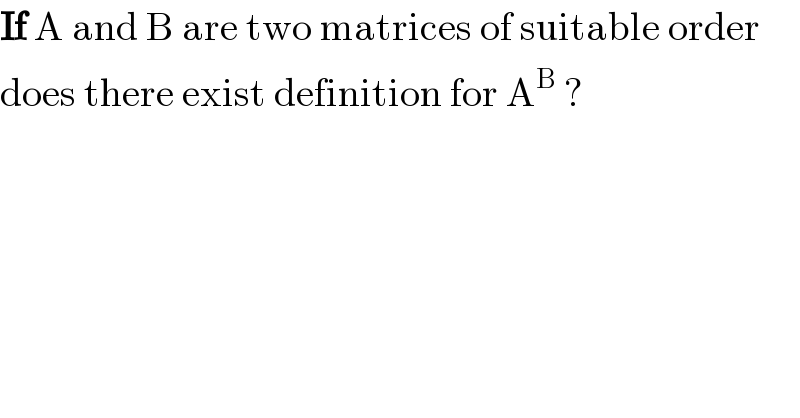Question Number 2546 by Rasheed Soomro last updated on 22/Nov/15

Commented by Yozzi last updated on 22/Nov/15
![A^B =e^((lnA)B) if A and B are sqaure and non−singular. e^((lnA)B) =1+(lnA)B+((((lnA)B)^2 )/(2!))+((((lnA)B)^3 )/(3!))+... ∴ A^B =Σ_(r=0) ^∞ (1/(r!))[(lnA)B]^(r ) (Matrix exponential)](https://www.tinkutara.com/question/Q2553.png)
Commented by Rasheed Soomro last updated on 22/Nov/15

Commented by Yozzi last updated on 22/Nov/15
. Then lnA^′ = [((lna 0)),((0 lnb)) ]. Taking ln on both sides of (∗) lnA^′ =V^(−1) (lnA)V⇒lnA=V(lnA^′ )V^(−1) .](https://www.tinkutara.com/question/Q2565.png)
Commented by Rasheed Soomro last updated on 22/Nov/15

